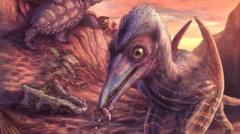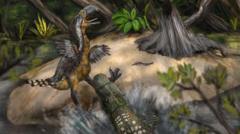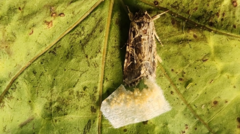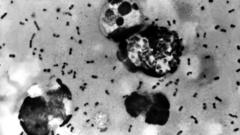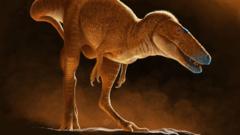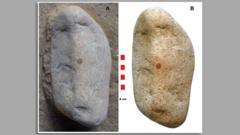The recently identified pterosaur species, named Eotephradactylus mcintireae—translating to "ash-winged dawn goddess"—was discovered from a jawbone unearthed in 2011. It is categorized as the earliest pterosaur found in North America, dating back approximately 209 million years. The research, published in the Proceedings of the National Academy of Sciences, suggests its remains were preserved in volcanic ash within a former riverbed of the ancient supercontinent, Pangaea.
The lead scientist, Dr. Ben Kligman from the Smithsonian's National Museum of Natural History, emphasized that the well-preserved fossil, found alongside various prehistoric remains such as teeth and coprolites, provides a glimpse into a diverse ecosystem where extinct species cohabited with their more modern counterparts. Notably, analysis of the pterosaur's teeth indicates it preyed on armored fish, showcasing a significant aspect of its dietary habits. This discovery not only expands our understanding of pterosaur evolution but also paints a richer picture of life during the Triassic period, underscoring the significance of such fossil beds in reconstructing ancient biodiversity.
Dr. Kligman concluded that identifying traits from ancient river deposits may lead to further discoveries of similar pterosaur fossils worldwide, enhancing our knowledge of this extraordinary chapter in Earth's history.
The lead scientist, Dr. Ben Kligman from the Smithsonian's National Museum of Natural History, emphasized that the well-preserved fossil, found alongside various prehistoric remains such as teeth and coprolites, provides a glimpse into a diverse ecosystem where extinct species cohabited with their more modern counterparts. Notably, analysis of the pterosaur's teeth indicates it preyed on armored fish, showcasing a significant aspect of its dietary habits. This discovery not only expands our understanding of pterosaur evolution but also paints a richer picture of life during the Triassic period, underscoring the significance of such fossil beds in reconstructing ancient biodiversity.
Dr. Kligman concluded that identifying traits from ancient river deposits may lead to further discoveries of similar pterosaur fossils worldwide, enhancing our knowledge of this extraordinary chapter in Earth's history.

